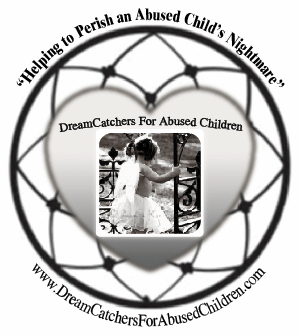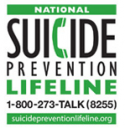Sexual Abuse
DID YOU KNOW?
1 in every 3 girls, and 1 in every 5 boys, will be molested before the age of 18 … 90% of those victims knowing their offender.
Where’s the outrage?

Children are suffering from a hidden epidemic of child abuse and neglect. Every year more than 3 million reports of child abuse are made in the United States alone involving more than 6 million children (a report can include multiple children). The United States has one of the worst records among industrialized nations – losing on average between four and seven children every DAY to child abuse and neglect.
SOURCE: childhelp.org
1 in 3 girls (and 1 in 6 boys) will be sexually abused before the age of 18!
What Is Child Sexual Abuse?
The National Center on Child Abuse and Neglect defines child sexual assault as: “Contacts or interactions between a child and an adult when the child is being used for sexual stimulation of the perpetrator or another person when the perpetrator or another person is in a position of power or control over the victim.” Sexual abuse is engaging a child in a sexual situation with an older person. It can include actual physical contact, such as fondling or rape, but it also includes making a child watch sexual acts or pornography, using a child in any aspect of the production of pornography, or making a child look at an adult’s genitals.
EXAMPLES: Digital (finger) penetration; Exhibitionism; Fondling a child’s genitals; Having intercourse with a child; Having oral sex with a child; Having sex in front of a child; Having a child touch an older person’s genitals; Incest; Masturbation; Oral-genital contact; Prostitution; Rape; Showing an adult’s genitalia to a child; Showing X-rated books or movies to a child; Sodomy; Using a child in pornographic production of any kind. Note: Every state has, in its child protection laws, a definition, often more specific than this general definition.
Child Sexual Abuse / Trauma
Child sexual abuse is largely a hidden crime, so it is difficult to accurately estimate the number of people who are sexually abused at some time during their childhood. Many people have a limited understanding of the causes, prevention, and impacts of childhood sexual abuse, probably because it’s still a taboo subject in our culture; as are other sexual and abuse related topics. A common symptom of sexual abuse is post-traumatic stress. One of the hardest things for parents to discover is that their child may have sexually harmed or abused another child. In this situation, denial, shock and anger are normal reactions. If it is not responded to quickly and sensitively, the effect on the whole family can be devastating. For this reason it is vital to contact someone for advice about what to do as soon as you suspect that something is wrong. The positive message is that early help for the child or young person and their family can make a real difference. Evidence suggests that the earlier children can get help, the more chance there is of preventing them moving on to more serious behavior It is important to be alert to the early warning signs that something is going wrong. If you are in this situation, remember that you are not alone. Many other parents have been through similar experiences, and, as a result, the child and family found the help they needed are were able to rebuild their lives.
Child sexual abuse includes touching and non-touching activity.
Some examples of touching activity include:
- touching a child’s genitals or private parts for sexual pleasure
- making a child touch someone else’s genitals, play sexual games or have sex putting objects or body parts (like fingers, tongue or penis) inside the vagina, in the mouth or in the anus of a child for sexual pleasure
Some examples of non-touching activity include:
- showing pornography to a child
- deliberately exposing an adult’s genitals to a child
- photographing a child in sexual poses
- encouraging a child to watch or hear sexual acts
- inappropriately watching a child undress or use the bathroom
————————————————————————————-
**Bruises on breasts, buttocks, lower abdomen, thighs, genital/rectal areas
**Complaints of pain or itching in genital or anal areas
**Difficulty walking or sitting
**Unusual or offensive body odors
**Difficulty in bladder or bowel control
**Constipation
**Pain or discomfort on urination
**Blood in urine
**Abnormal dilation of vaginal or rectal openings
**Foreign bodies in vaginal, rectal or urethral openings
**Sexually transmitted diseases found vaginally, rectally or orally
**Yeast or bacterial infections
**Frequent sore throats; difficulty swallowing; choking
**Ear infections/problems
**Sudden weight gain or extreme weight loss
**Severe psychosomatic complaints such as stomachaches and headaches
- Waking up during the night sweating, screaming or shaking with nightmares.
- Masturbating excessively, knowledge of sexual acts.
- Aggressive behavior toward family members, friends, toys, and pets.
- Pain while urinating or during bowel movement.
- Symptoms of genital infections, offensive odor, or sexually transmitted disease.
- Evidence of physical traumas to the genital or anal area.
- Regression in psychological behavior or wetting the bed.
- Loss of appetite or other eating problems, including unexplained gagging.
- Showing unusual fear of a certain place or location.
- Developing frequent unexplained health problems.
- Engaging in persistent sexual play with friends, toys or pets.
- Having unexplained periods of panic, which may be flashbacks from the abuse.
- Regressing to behaviors younger than the stage of development they already achieved.
- Initiating sophisticated sexual behaviors.
- Indicating a sudden reluctance to be alone with a certain person.
- Engaging in self-mutilations, such as sticking themselves with pins/cutting themselves.
- Withdrawing from previously enjoyable activities, like school or social play.
- Asking an unusual amount of questions about human sexuality.
- Acting out in an inappropriate sexual way with toys or objects
- Nightmares, sleeping problems
- Becoming withdrawn or very clingy
- Becoming unusually secretive
- Sudden unexplained personality changes, mood swings and seeming insecure
- Regressing to younger behaviors, e.g. bed-wetting
- Unaccountable fear of particular places or people
- Outburst of anger
- Changes in eating habits
- New adult words for body parts and no obvious source
- Talk of a new, older friend and unexplained money or gifts
- Self-mutilation (cutting or burning) in adolescents
- Physical signs, such as, unexplained soreness or bruises around genitals or mouth, sexually transmitted diseases, pregnancy
- Running away
- Not wanting to be alone with a particular child or young person
Any one sign doesn’t mean that a child was or is being sexually abused, but the presence of several suggests that you should begin to ask questions and consider seeking help. Keep in mind that some of these signs can emerge at other times of stress such as:
- During a divorce
- Death of a family member or pet
- Problems at school or with friends
- Other anxiety-inducing or traumatic events
Child sexual abuse is reported almost 90,000 times a year, but the numbers of unreported abuse is far greater. Children are afraid to tell anyone what has happened, and the legal procedure for validating an episode is difficult & expensive….
–1 in 3 girls and 1 in 6 boys will be sexually abused before the age of 18.
–67% of all victims of sexual assault reported to law enforcement agencies were juveniles.
–34% of all victims were under age 12.
–1 in 7 victims of sexual assault reported to law enforcement agencies were under age 6.
–40% of the offenders who victimized children under age 6 were juveniles.
–Most children are abused by someone they know and trust.
–Boys are more likely than girls to be abused outside of the family.
–96% of reported rape survivors under age 12 knew the attacker.
–4% of offenders were strangers, 20% fathers, 16% relatives, 50% acquaintances or friends.
FREE PDF CHILD SEX ABUSE COLORING BOOK
“It’s Okay to Tell” — a free online PDF version that you can download to your own computer, read, or print off for your child.
Perpetrators
- Can a child molester be rehabilitated?
- Do abuser’s feel remorse?
- How can I identify if someone might be an abuser? What are some identifying features?
- Why do people sexually abuse children?
Statistics
- What are the perpetrator statistics on fathers, brothers, neighbors, etc.?
- How does alcohol play a role?
- What are the statistics on boys vs girls who are abused?
- For how many years does abuse usually continue?
- Is there more sexual abuse in the US than in other countries?
Trauma Recovery
- What is traumatic dissociation or amnesia of childhood sexual abuse? Is it real?
- If I have memories of sexual abuse, how do I know if they are accurate?
- Does childhood sexual abuse affect adult relationships?
- Can sexual abuse make individuals gay/homosexual?
- Why do so many people who were sexually abused wait so long to report it?
- Shouldn’t adults who were abused as children try to let it go?
- If I, or someone I know was sexually abused, what can I do to help recover?
- What is it like to tell someone you’ve been abused and not be believed?
- Is it okay to give support to both the abuser and the abused in a family?
Legal Issues
- Are there changes in laws that protect children?
- In what ways are children sexually abused? Is it always physical?
- Does pornography promote sexual abuse?
- Is there more sexual abuse than there used to be?
- I am an adult who was abused as a child, should I tell someone? Should I go to counseling?
- How can I tell if a child is being abused? Should I investigate? What should I be doing? Call the police? Question the child?
- What is the age of sexual consent? Is it sexual abuse if a brother and sister about the same age, or a few years apart engage in sexual activity? If there is a line, where is it drawn between experimenting and abuse?
- Are there national or federal laws that pertain to childhood sexual abuse?
Child sexual abuse has been at the center of unprecedented public attention during the last decade. All fifty states and the District of Columbia have enacted statutes identifying child sexual abuse as criminal behavior. This crime encompasses different types of sexual activity, including voyeurism, sexual dialogue, fondling, touching of the genitals, vaginal, anal, or oral rape and forcing children to participate in pornography or prostitution.
Child Sexual Abusers
Perpetrators of child sexual abuse come from different age groups, genders, races and socio- economic backgrounds. Women sexually abuse children, although not as frequently as men, and juvenile perpetrators comprise as many as one-third of the offenders. One common denominator is that victims frequently know and trust their abusers. Child abusers coerce children by offering attention or gifts, manipulating or threatening their victims, using aggression or employing a combination of these tactics.
Child Sexual Abuse Victims
Studies have not found differences in the prevalence of child sexual abuse among different social classes or races. However, parental inadequacy, unavailability, conflict and a poor parent-child relationship are among the characteristics that distinguish children at risk of being sexually abused (Finkelhor, 1994). According to the Third National Incidence Study, girls are sexually abused three times more often than boys, whereas boys are more likely to die or be seriously injured from their abuse (Sedlak & Broadhurst, 1996). Both boys and girls are most vulnerable to abuse between the ages of 7 and 13 (Finkelhor, 1994).
Incest
Incest traditionally describes sexual abuse in which the perpetrator and victim are related by blood. However, incest can also refer to cases where the perpetrator and victim are emotionally connected. Intrafamily perpetrators constitute from one-third to one-half of all perpetrators against girls and only about one-tenth to one-fifth of all perpetrators against boys. There is no question that intrafamily abuse is more likely to go on over a longer period of time and in some of its forms, particularly parent-child abuse, has been shown to have more serious consequences.
Symptoms of Child Sexual Abuse
Many sexually abused children exhibit physical, behavioral and emotional symptoms. Some physical signs are pain or irritation to the genital area, vaginal or penile discharge and difficulty with urination. Victims of known assailants may experience less physical trauma because such injuries might attract suspicion.
Behavioral changes often precede physical symptoms as the first indicators of sexual abuse (American Humane Association Children’s Division, 1993). Behavioral signs include nervous or aggressive behavior toward adults, sexual provocativeness before an appropriate age and the use of alcohol and other drugs. Boys “are more likely than girls to act out in aggressive and antisocial ways as a result of abuse”. Children may say such things as, “My mother’s boyfriend does things to me when she’s not there,” or “I’m afraid to go home tonight.”
Consequences
Consequences of child sexual abuse range “from chronic depression to low self-esteem to sexual dysfunction to multiple personalities. A fifth of all victims develop serious long-term psychological problems, according to the American Medical Association. These may include dissociative responses and other signs of post-traumatic-stress syndrome [sic], chronic states of arousal, nightmares, flashbacks, venereal disease and anxiety over sex”.
Cycle of Violence
Abuse is a cycle that is repeated over & over unless the cycle is STOPPED. Children who are abused or neglected are more likely to become criminal offenders as adults. Childhood abuse increased the odds of future delinquency and adult criminality overall by 40%. Child sexual abuse victims are also at risk of becoming ensnared in this cycle of violence. Victims of child sexual abuse are 27.7 times more likely to be arrested for prostitution as adults. Some victims may become sexual abusers themselves because they have a difficult time relating to others except on sexual terms.
LEGAL ACTION
Suspicions of child sexual abuse should be reported to a child protective services agency or law enforcement agency. Local child protection agencies investigate intramural abuse and the police investigate extra-familial abuse. The law requires professionals who work with children to report suspected neglect or abuse.
In addition to reporting child sexual abuse to the authorities, victims can sue their abusers in civil court to recover monetary damages or win other remedies Many states have extended their criminal and civil statutes of limitation for child sexual abuse cases (National Center for Victims of Crime, 1995). In addition, the delayed discovery rule suspends the statutes of limitation if the victim had repressed all memory of the abuse or was unaware that the abuse caused current problems.
Adult Survivors of Child Sexual Abuse
Survivors of child sexual abuse use coping mechanisms to deal with the horror of the abuse. One such mechanism, protective denial, entails repressing some or all of the abuse. This may cause significant memory gaps that can last months or even years. Victims also use dissociative coping mechanisms, such as becoming numb, to distance themselves from the psychological and physiological responses to the abuse. They may also turn to substance abuse, self-mutilation and eating disorders. In order to recover, adult survivors must adopt positive coping behaviors, forgive themselves, and relinquish their identities as survivors. The healing process can begin when the survivor acknowledges the abuse. When working with adult survivors of child sexual abuse, therapists should consider the survivor’s feeling of security and the personal and professional ramifications of disclosure.
SOURCE: The National Center for Victims of Crime
*************************************************************************
Identification of Sexual Abuse
Clinical Report: The Evaluation of Sexual Behaviors in Children
Sexual Behavior and Children: When Is It a Problem and What To Do About It
Sexual Development and Sexual Behavior Problems in Children Ages 2-12
Evaluations of Child Sexual Abuse: Recognition of Overt and Latent Family Concerns
Leventhal, Murphy, & Asnes
Child Abuse and Neglect International Journal, 34(5), 2010
View AbstractHandbook of Social Work in Child and Adolescent Sexual Abuse
Hilarski, Wodarski, & Feit (2008)
View AbstractRecognizing and Reporting Child Abuse and Child Sexual Abuse
Family Support Line, Merit Systems (2008)
View Abstract
Parenting a Child Who Has Been Sexually Abused: A Guide for Foster and Adoptive Parents Series Title: Factsheets for Families Author(s): Child Welfare Information Gateway Availability: View
Download (PDF – 240KB)
Order (Free – Add to Cart)Year Published: 2008 – 10 pages Many factors affect how children react to and recover from sexual abuse. Parents play an important role in their children?s recovery. This fact-sheet includes information to help foster and adoptive parents of children who have been sexually abused. It includes information about child sexual abuse, tips for establishing guidelines for safety and privacy in the family, and guidance on when and how to seek help, if needed.
EXCLUSIVE: Prison Letter From A Convicted Child Molester
******PLEASE NOTE******
NOT ALL PEOPLE THAT ARE “LABELED” AS A CHILD SEXUAL PEDOPHILE ARE ACTUALLY CHILD MOLESTERS–ONLY ACCORDING TO CERTAIN STATES, THEIR LAWS & LEGISLATION.
FOR EXAMPLE:
IF A 17-YEAR OLD TEENAGE BOY HAS CONSENSUAL SEX WITH A GIRL UNDER THE AGE OF 16…IT COULD BE CONSIDERED CHILD MOLESTATION ACCORDING TO THE STATE THE INCIDENT OCCURS IN….WHILE IN OTHER STATES, IT IS ACCEPTABLE.
(ie: SUCH AS A ROMEO & JULIET SCENARIO)






















![Validate my RSS feed [Valid RSS]](http://dreamcatchersforabusedchildren.com/wp-content/uploads/2009/10/valid-rss.png)













bonnie richard Says:
the difference between sex abuse in 1962 and 2010–is when you would tell–your dad or mom would say –‘ahh they would not do that to you’ ‘you misunderstood’
there was no one to believe you in those days–but the victim–has –nightmares–scared to be alone–eating problems–sickness –scared to go to home of abusers
dont want to be touched in any way–affection is a form of hurt–
sex abuse must stop
Posted on August 22nd, 2010 at 10:38 pm